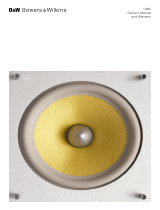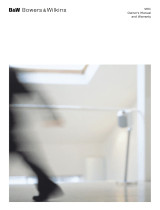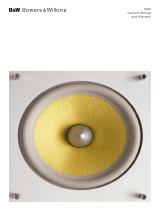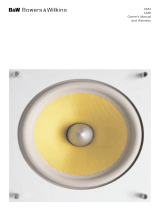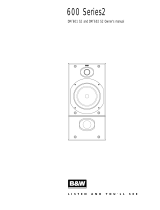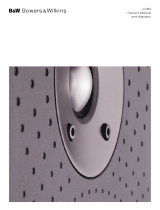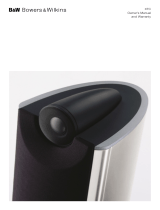Page is loading ...

SigDiamond OM iss2 FORWEB.pdf 13/4/07 1:05:50 pmSigDiamond OM iss2 FORWEB.pdf 13/4/07 1:05:50 pm

SigDiamond OM iss2 FORWEB.pdf 13/4/07 1:04:12 pmSigDiamond OM iss2 FORWEB.pdf 13/4/07 1:04:12 pm

Contents
English
Owner’s Manual............2
Limited Warranty...........4
Français
Manuel d’utilisation.......5
Garantie limitée.............8
Deutsch
Bedienungsanleitung.....9
Garantie .....................12
Español
Manual de
instrucciones ..............13
Garantía limitada.........16
Português
Manual do utilizador....17
Garantia limitada.........19
Italiano
Manuale di istruzioni ...20
Garanzia limitata .........23
Nederlands
Handleiding ................24
Garantie .....................26
Ελληνικά
Ãδηγίες Ìρήσεως ....27
Περιïρισµένη
εγγύηση....................30
Русский
Руководство по
эксплуатации ............31
Ограниченная
гарантия....................34
"esky
Návod k pouãití..........35
Záruka .......................38
Polski
Instrukcja
uÃytkownika ...............39
Gwarancja .................41
.....................42
.......................44
.......................45
.......................47
EU Declaration of
Conformity..................50
Technical
Specifications .............51
SigDiamond OM iss2.qxd 6/12/06 10:04 am Page 1

English
Owner’s manual
Dear customer,
Thank you for choosing B&W and welcome to the
Signatur
e Diamond. There are numerous examples in
the B&W canon of speakers that have set a new
benchmark or defined a new breed. The Signature
Diamond is destined to become another such
landmark. Please read this manual fully before
unpacking and installing the pr
oduct. It will help you to
optimise its performance. B&W maintains a network of
dedicated distributors in over 60 countries who will be
able to help you should you have any pr
oblems your
dealer cannot resolve.
An important motivation behind the Signature Diamond’s
birth was a celebration of our 40th anniversary. Its
design glances both backwards, over our heritage, and
forwards towards future advances in speaker technology
and performance. The Signature Diamond is both a
distillation of our design lineage, and a uniquely
innovative expression of our most advanced
technologies.
It would be easy simply to list the technologies
incorporated within the Signature Diamond – almost
every one we know is represented – but one
unmistakable mark of a fine speaker is that it exceeds
the sum of its parts to perform with an indefinable
magic. In large part, the magic is a result of how a
speaker’s engineering elements are arranged and
combined – how the whole is designed. Because of
this, and in light of the Signature Diamond’s
celebratory nature, we invited our long-term design
collaborator Kenneth Grange to work with our
in-house team on its conception and development.
The “architecture”, aesthetic and material choices of
the Signature Diamond are his and as such he can
take much credit for its magic.
Kenneth Grange CBE RDI is without doubt one of the
most eminent in the field of consultant industrial
designers. More than that, he was one of the first. His
work crosses product sectors from transport (he was
responsible for the latest iteration of the classic
London taxi cab and that long-lived icon of British Rail,
the Inter City 125 train), through to consumer
electronics wher
e, in addition to B&W, he has
contributed to products from Kodak, Kenwood, Parker
Pens and many others. Most of us will at some time
have used a pr
oduct on which Kenneth made a mark.
He was the first industrial designer ever to be
honoured with a one-man exhibition at London’s
V
ictoria and Albert Museum and he holds five
University Honorary Doctorates, including one from the
Royal College of Art, London, where he is currently a
Visiting Professor.
Kenneth’
s design brief fr
om us for the Signatur
e
Diamond was one of the most liberating, yet
challenging, a designer can receive. We asked him to
follow his instincts and design the speaker he’d always
wanted. Designers rarely design for themselves; they
ar
e conditioned to change the World from others’
perspective, so for Kenneth, a brief that put him in the
position of “customer” was an unusual experience.
The path he followed has two strands. First, he
developed an enclosure aesthetic – intersecting tubular
forms – that he’d been drawn to pr
eviously, but had
never had an opportunity to pursue. Second, he chose
an emphasis on fine materials and finishes to be an
inher
ent aspect of the Signature Diamond’s personality.
What better material, for example, than solid Italian
marble to enclose a diamond dome tweeter?
The Signature Diamond is then both a personal
statement and a genuinely exciting example of the
industrial designers’ and speaker engineers’ craft. We
hope you will enjoy listening to it as much as Kenneth
and we enjoyed creating it.
Environmental Information
B&W products are designed to comply with
international directives on the Restriction of
Hazardous Substances (RoHS) in electrical and
electronic equipment and the disposal of Waste
Electrical and Electronic Equipment (WEEE). The
crossed wheelie bin symbol indicates compliance and
that the products must be appropriately recycled or
processed in accordance with these directives.
Consult your local area waste disposal organisation for
guidance on how to dispose of this equipment in a
proper manner.
Unpacking and Handling
Signature Diamonds are both heavy and relatively
delicate and must be unpacked from their cartons
carefully. Figure 1 illustrates the unpacking procedure.
Due to the weight and relatively delicate nature of the
Signature Diamond we recommend that unpacking be
carried out by two people working together. It is
preferable to unpack the speakers close to the
position in which they are to be used. Never carry or
hold a speaker by its tweeter enclosure. Try to avoid
touching any part of either drive unit.
Spike (or rubber) foot fitting and speaker cable
connecting may be carried out during the unpacking
procedure when the still part-packed speaker is first
laid on its side. See Figure 1 to identify the appropriate
stage in the unpacking procedure. The protective bag
around the speaker must be cut to gain access to its
underside.
Carton Contents
Check in the carton for:
1
Accessory pack containing:
5 Spike feet
5 Rubber feet
5 lock nuts (10mm acr
oss flats)
1 Allen key
Speaker Installation
Due to the weight and relatively delicate nature of the
Signatur
e Diamond we recommend that installation be
carried out by two people working together.
2
SigDiamond OM iss2.qxd 6/12/06 10:04 am Page 2

The Signatur
e Diamond is intended to be floor
mounted only. It is important to ensure that the
speakers stand firmly on the floor using the spike feet
supplied whenever possible. The spike feet are
designed to pier
ce carpet and rest on the floor
surface. Initially
, screw the lock nuts onto the spikes
enough to leave the nuts floating just above the carpet
when the spikes ar
e resting on the floor beneath.
The spike feet ar
e best fitted to the underside of the
speaker when it is laid on its side during unpacking or
later for connection. Identify the five tapped holes in
the underside of the plinth (see Figur
e 3) and screw a
spike foot into each one.
Once the spike feet are fitted and the speaker is
r
eturned to the upright position, it may rock on the
floor. To minimise rocking, unscrew the spikes that do
not touch the floor until the speaker rests firmly
without rocking then lock the nuts against the plinth. It
may be more convenient to fit and adjust the spike
feet after speaker positioning has been optimised.
If there is no carpet and you wish to avoid scratching
the floor surface, use either a protective metal disc
(a coin perhaps) between the spike and the floor or
use the supplied rubber feet. Fit the rubber feet and
level the speaker in the same manner as with the
spike feet.
Speaker Positioning
Adjustment of speaker position following initial
installation will probably further improve the sound
quality and is usually worthwhile.
To begin with, the speakers should be positioned
between 2.0m and 3.0m apart at two corners of an
equilateral triangle completed by the listening area at
the third corner. Ideally, the speakers should be at
least 0.5m away from the back wall, and at least 1.0m
away from any side walls. They should be angled
inward so that they point at, or just in front of, the
listening position. Figure 2 illustrates this arrangement.
Try to ensure that the immediate surroundings of each
speaker are similar in acoustic character. For example,
if one speaker is adjacent to bare walls while the other
is adjacent to soft furnishings and curtains, both the
overall sound quality and the stereo image are likely to
be compromised.
Stray Magnetic Fields
The speaker drive units create stray magnetic fields
that extend beyond the boundaries of the cabinet. We
r
ecommend you keep magnetically sensitive articles
(CRT television and computer screens, computer
discs, audio and video tapes, swipe cards and the
like) at least 0.5m fr
om the speaker
. LCD and plasma
screens are not affected by magnetic fields.
Connections
All connections should be made with the equipment
switched off.
There are two linked pairs of terminals on the
underside of the Signature Diamond. To access the
terminals, the speaker must be laid car
efully on its
side. This may be as part of the unpacking procedure.
The terminals can accept bar
e-wires, spade
connectors or the custom right-angle plugs attached
to the terminal link cables.
For conventional connection, the terminal links should
remain in place (as delivered) and just one pair of
terminals connected to the amplifier
. For bi-wire
connection, the terminal links should be r
emoved and
each pair of terminals connected to the amplifier
independently
. Bi-wiring can improve the resolution of
low-level detail.
If the speakers are to be bi-wired, the right-angle
plugs may be removed from the link cables using the
Allen key supplied and attached to the connection
cables. Figure 5 illustrates this use of the plugs.
Once the connections have been made, the cable
clamp should be tightened down on the cable using
the two wing nuts. The speaker may then be returned
to the upright position. When standing the speaker
upright, take care that its weight is not borne by only
one or two spike feet.
Figure 4 illustrates conventional and bi-wire
connection and use of the cable clamp.
Ensure that the positive terminals on the speaker
(marked + and coloured red) are connected to the
positive output terminal on the amplifier and the
negative terminals on the speaker (marked – and
coloured black) are connected to the negative output
terminal on the amplifier. Incorrect connection can
result in poor imaging and loss of bass.
Ask your dealer for advice when selecting speaker
cable. Keep its total impedance below the maximum
recommended in the speaker specification and use a
low inductance cable to avoid attenuation of high
frequencies.
Fine Tuning
Before fine tuning, make sure that all the connections
in the installation are correct and secure.
Moving the speakers further from the walls will
generally reduce the volume of bass. Space behind
the speakers will also help to create an aural
impression of depth. Conversely, moving the speakers
closer to the walls will increase the volume of bass.
If the bass seems uneven with frequency, this will
most probably be due to resonance modes in the
listening room. Even small changes in the position of
the speakers or the listening position can have a
profound effect on how these resonances affect the
sound. Try moving the listening position or locating the
speakers along a different wall. The presence and
position of large pieces of fur
niture can also influence
r
esonance modes.
If the central image lacks focus, try moving the
speakers closer together or angling them inwar
d so
that they point at a location further in front of the
listening position. Figure 2 illustrates speakers angled
inwar
ds. V
arying the degree of inward angle can often
be an extremely effective mode of fine tuning.
If the sound is too bright, increasing the amount of
soft furnishing in the room (heavier curtains for
3
SigDiamond OM iss2.qxd 6/12/06 10:04 am Page 3

example) may help balance the sound. Conversely
,
reducing the amount of soft furnishing may help
brighten a dull sound.
Some r
ooms suffer from “flutter echoes” – echoes that
bounce between parallel room boundaries. Flutter
echoes can colour the sound of the speakers in the
r
oom. Test for flutter echoes by standing in the middle
of the room and clapping your hands. Flutter echoes
can be r
educed by placing irregular shaped items or
non-reflective surfaces, bookshelves, rugs or pictures
for example, on one of the offending walls or floor.
Running-in Period
The performance of the speaker will change subtly
during the initial listening period. If the speaker has
been stored in a cold environment, the damping
compounds and suspension materials of the drive
units will take some time to recover their correct
mechanical properties. The drive unit suspensions will
also loosen up during the first hours of use. The time
taken for the speaker to achieve its intended
performance will vary depending on previous storage
conditions and how it is used. As a guide, allow up to
a week for the temperature effects to stabilise and
15 hours of average use for the mechanical parts to
attain their intended design characteristics.
However, longer run-in periods (as long as a month)
have been reported and there is evidence to suggest
that this has little to do with the speaker changing and
more to do with the listener getting used to the new
sound. This is especially so with highly revealing
speakers such as these, where there may be a
significant increase in the amount of detail compared
with what the listener has previously been used to; the
sound may at first appear too “up front” and perhaps
a little hard. After an extended period of time, the
sound will seem to mellow, but without losing clarity
and detail.
Aftercare
The cabinet surfaces usually only require dusting. If
you wish to use an aerosol or other cleaner, remove
the grille first by gently pulling it away from the
cabinet. Spray aerosols onto the cleaning cloth, not
directly onto the product. Test a small area first, as
some cleaning products may damage some of the
surfaces. Avoid products that are abrasive, or contain
acid, alkali or anti-bacterial agents. Do not use
cleaning agents on the drive units. The grille fabric
may be cleaned with a normal clothes brush whilst the
grille is detached from the cabinet. Avoid touching the
drive units, especially the tweeter
, as damage may
result.
Please be aware that, like all natural materials, the
wooden cabinet of the speaker will r
espond to its
environment. Keep the product away from sources of
direct heat such as radiators and warm air vents to
avoid the risk of cracking. The wood is treated with an
ultra-violet r
esistant lacquer to minimise changes in
colour over time, but a degree of change is to be
expected. This effect may be particularly noticeable
wher
e ar
eas kept in shadow change mor
e slowly than
other areas. Colour differences may be rectified by
exposing all the veneer surfaces equally and evenly to
sunlight until the colour is uniform. This process can
take several days or even weeks, but may be
accelerated by careful use of an ultra-violet lamp.
Limited Warranty
This pr
oduct has been designed and manufactured to
the highest quality standards. However, if something
does go wrong with this product, B&W Group Ltd. and
its national distributors warrant fr
ee of charge labour
(exclusion may apply) and replacement parts in any
country served by an of
ficial B&W distributor.
This limited warranty is valid for a period of five years
from the date of purchase or two years for electronics
including amplified loudspeakers.
Terms and Conditions
1 The warranty is limited to the repair of the
equipment. Neither transportation, nor any other
costs, nor any risk for removal, transportation and
installation of products is covered by this warranty.
2 This warranty is only valid for the original owner. It
is not transferable.
3 This warranty will not be applicable in cases other
than defects in materials and/or workmanship at
the time of purchase and will not be applicable:
a. for damages caused by incorrect installation,
connection or packing,
b. for damages caused by any use other than correct
use described in the user manual, negligence,
modifications, or use of parts that are not made or
authorised by B&W,
c. for damages caused by faulty or unsuitable
ancillary equipment,
d. for damages caused by accidents, lightning, water,
fire heat, war, public disturbances or any other
cause beyond the reasonable control of B&W and
its appointed distributors,
e. for products whose serial number has been
altered, deleted, removed or made illegible,
f. if repairs or modifications have been executed by
an unauthorised person.
4 This guarantee complements any national/regional
law obligations of dealers or national distributors
and does not affect your statutory rights as a
customer
.
How to claim repairs under warranty
Should service be required, please follow the following
procedure:
1
If the equipment is being used in the country of
purchase, you should contact the B&W authorised
dealer from whom the equipment was purchased.
2 If the equipment is being used outside the country
of pur
chase, you should contact the B&W national
distributor in the country of residence who will
advise where the equipment can be serviced. You
4
SigDiamond OM iss2.qxd 6/12/06 10:04 am Page 4

43
SigDiamond OM iss2.qxd 6/12/06 10:04 am Page 43

44
SigDiamond OM iss2.qxd 6/12/06 10:04 am Page 44

45
SigDiamond OM iss2.qxd 6/12/06 10:04 am Page 45

46
SigDiamond OM iss2.qxd 6/12/06 10:04 am Page 46

47
SigDiamond OM iss2.qxd 6/12/06 10:04 am Page 47

48
SigDiamond OM iss2.qxd 6/12/06 10:04 am Page 48

49
SigDiamond OM iss2.qxd 6/12/06 10:04 am Page 49

50
SigDiamond OM iss2.qxd 6/12/06 10:04 am Page 50

51
Signature Diamond
Technical features
Description
Drive units
Frequency range
Frequency response
Dispersion
Sensitivity
Harmonic distortion
Nominal impedance
Crossover frequency
Recommended amplifier power
Max. recommended cable impedance
Dimensions
Net weight
Free-mounted diamond dome tweeter with Nautilus
™
tube loading
Kevlar
®
brand fibre cone bass/midrange
Flowport
™
2-way vented-box system
1x ø180mm (7 in) woven Kevlar
®
cone bass/midrange
1x ø25mm (1 in) diamond dome high frequency
-6dB at 32Hz and 33kHz
40Hz - 28kHz ±3dB on reference axis
Within 2dB of reference response
Horizontal: over 50
o
arc
Vertical: over 10
o
arc
88dB spl (2.83V, 1m)
2nd and 3rd harmonics (90dB, 1m)
<1% 80Hz - 100kHz
<0.5% 110Hz - 100kHz
8
Ω
(minimum 4.6
Ω
)
3.8kHz
50W - 120W into 8
Ω
on unclipped programme
0.1
Ω
Height: 930mm (36.6 in) (not including feet)
Width: 230mm (9.1 in)
Depth:
375mm (14.8 in) (including grille and terminals)
25kg (55 lb)
SigDiamond OM iss2.qxd 6/12/06 10:04 am Page 51

52
Copyright © B&W Group Ltd. E & OE
Kevlar is a registered trademark of DuPont
Nautilus and Flowport ar
e trademarks of
B&W
Gr
oup Ltd.
Printed in England.
B&W
Gr
oup (UK
Sales)
T +44 1903 221 500
E uksales@bwgr
oup.com
B&W Gr
oup North America
T +1 978 664 2870
B&W Group Asia Ltd
T +852 2 869 9916
B&W
Gr
oup Ltd
Dale
Road
Worthing West Sussex
BN
1
1
2BH England
T +44 (0) 1903 221 800
F +44 (0) 1903 221 801
www
.bowers-wilkins.com
ll11286 Issue 2
SigDiamond OM iss2.qxd 6/12/06 10:04 am Page 52
/
